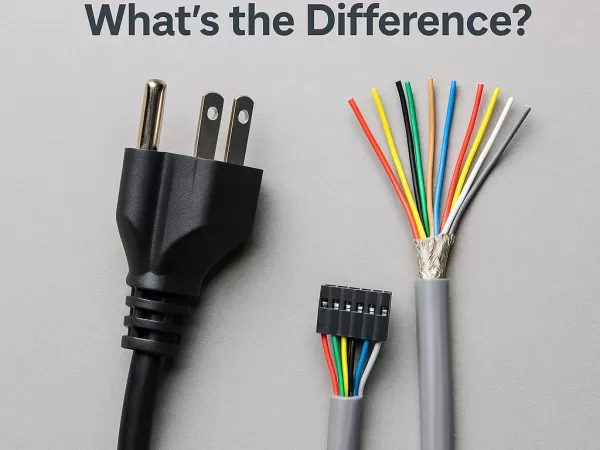Power vs. Signal Cables — What’s the Difference?

In every industrial system—whether it’s automation equipment, LED lighting, or smart electronics—cables are the silent backbone. Yet, one of the most common questions from engineers and buyers is:
What’s the difference between power cables and signal cables?
Understanding this is essential to ensure safety, reduce failures, and optimize system performance.
Let’s break it down.
1. Power Cables: Designed for Energy Delivery
Power cables are built to carry electrical current needed to operate devices, motors, and control systems.
They’re engineered for durability and safety under higher loads.
Key Features
Larger conductor size (0.5mm² – 16mm² or more)
Heavy-duty insulation (PVC, XLPE, Silicone, TPE)
High current carrying capability
Often require flame resistance and heat protection
Used in AC power, DC power, drivers, motors, and lighting systems
Typical Applications
LED drivers and power supplies
Industrial machinery
Automotive power distribution
Energy storage & battery systems
HVAC and home appliances
2. Signal Cables: Built for Communication & Control
Signal cables are designed to transmit data or low-voltage signals with precision and minimal interference.
Key Features
Small conductor size (AWG 26–30)
Shielding options to reduce EMI (foil/braid/shielded pairs)
Low noise, high stability
Supports analog and digital communication
Typical Applications
Sensors & PLC control
IoT devices
Communication modules (RS485, CAN, Ethernet)
LED dimming & control signals
Medical and laboratory equipment
3. Why the Difference Matters
Choosing the wrong cable can lead to:
Signal interference
System malfunction
Voltage drops
Overheating or even fire hazards
Device failure due to unstable communication
In industrial environments, especially with heavy motors and drives, mixing signal and power paths without proper shielding is a major risk.
4. Combined Cable Solutions
Modern applications often require hybrid cables that integrate:
Power conductors
Signal pairs
Shielding
Overmolded connectors
This allows:
Cleaner installation
Fewer failure points
Higher efficiency
Customization for specific devices or modules
Our Cable Solutions
At Easychips, we specialize in both power cables and high-precision signal cables, including:
Custom wire harness assemblies
Power + signal hybrid cables
IDC ribbon cables
Overmolded cable solutions
Board-to-cable and wire-to-wire connectors
All assemblies are fully tested and built for stability in demanding industrial environments.
If you're upgrading your system or starting a new design, we’re here to help you choose the right cable for maximum reliability and performance.
#CableAssembly #PowerCables #SignalCables #IndustrialAutomation #WireHarness #Engineering #Manufacturing #OEM #SmartDevices #Automation